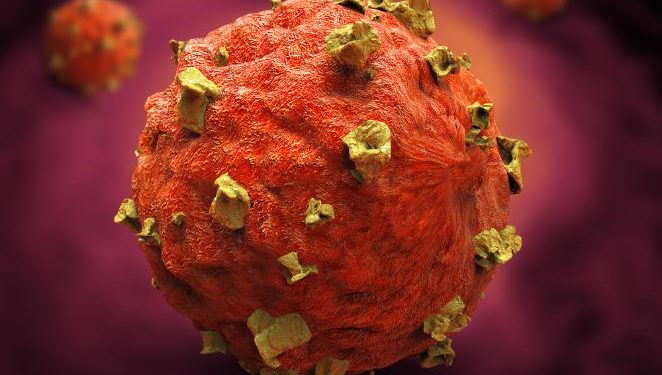The stage of cancer tells doctors how big the tumor is and whether it has spread. Doctors use different staging systems for different types of cancers.
For instance, blood cancers such as leukemia or multiple myeloma have their own system for staging. When talking with a person who has stage 4 cancer, try to avoid asking personal questions about their lab results or prognosis.
Symptoms
Symptoms depend on where cancer has spread to in your body. Most cancer stages are described using a system called TNM (Tumor, Nodes, Metastases). Each stage is given a number from 1 to 4. Stage 0 describes early and small tumors that have not spread. Stages 1, 2 and 3 describe larger cancers that have grown deeper into nearby tissue but have not spread to lymph nodes or other parts of the body. Cancer that has spread to other organs is called stage 4 and it’s also known as advanced or metastatic cancer.
X-rays, scans and biopsied tissues provide doctors with information about cancers and how they have developed. Doctors use this data to decide on a treatment plan for each patient.
If cancer has spread to your lungs, you may have a dry cough or feel a heaviness in the chest. Lung cancer that has spread to the brain might cause headaches, nausea or a change in your personality. Cancer that has spread to your bones might cause pain, particularly when it presses on a nerve or bone. It might also break apart and form new tumors elsewhere in your body.
Most people in stage 4 cancer experience fatigue and weakness. They often lose weight and want to sleep a lot. This stage of cancer isn’t curable but it can be treated to slow its progression and alleviate symptoms. Your health care team will talk with you about treatment options, including chemotherapy, radiation and surgery. They might also suggest palliative care.
Treatment
Cancer staging is used to help healthcare providers develop treatment plans. It helps them determine what type of treatment is likely to work best and how successful that treatment will be.
The first step in staging is clinical staging, which is based on information from your doctor’s physical exams and medical history, and the results of any x-rays or scans you have had done. Your doctor will also use information from any biopsy of the tumor or lymph nodes that have been taken. This will give your doctor an initial idea of how far the cancer has spread, which they will then use to create a pathological staging score.
In stage 2, cancer cells have spread deeper into neighboring tissue and possibly into lymph nodes, but it hasn’t yet reached distant sites in the body. This is also known as early locally advanced cancer or stage 3 cancer.
Stage 4 cancer, sometimes called metastatic cancer, occurs when cancer has spread from its original site to distant parts of the body. It may be discovered in these locations years after the original diagnosis and after the primary cancer site has been treated or removed.
A person’s prognosis at stage 4 depends on what type of cancer they have and how it has progressed, but in most cases the disease isn’t curable by this point. This is especially true if the cancer has spread to bones or other organs.
The goal of chemotherapy is to shrink or eliminate cancerous cells, either in the area where the tumor is located or elsewhere in the body. Chemotherapy can be combined with other treatments, such as radiation or surgery. It can also be used to control symptoms, such as pain or nausea, for people with advanced cancer.
Some people in this stage of the disease may choose to take part in palliative care, which is designed to improve comfort and ease stress. These services are often available through healthcare providers or at community-based centers that specialize in this type of treatment. These services can include massage, acupuncture and other methods to reduce pain.
Prognosis
When cancer cells grow out of control, they build up and form a tumor. These cancerous cells can then spread to other parts of the body and become metastatic. Stage 4 is the most advanced stage of cancer, and it’s hard to be cured at this point.
Doctors use a system called the TNM score to help them determine how severe the cancer is. T stands for the tumor’s size and N indicates whether or not it has spread to nearby lymph nodes. If the cancer has not spread, it is stage 0 or stage 1. If the tumor has grown deeply into nearby tissues or has spread to other organs, it’s in stages 2 through 4.
In some cases, doctors may have to determine a cancer’s grade, which tells them how quickly it might grow. This involves examining the cancerous tissue under a microscope to see how much it looks like healthy tissue. Doctors can also determine the grade of a tumor using imaging tests.
The final stage, M, indicates if the cancer has spread to other areas of the body, known as metastasizing. It’s important to remember that when doctors describe your prognosis, they’re talking about averages. Your specific situation will depend on many different factors, including the type of cancer and where it has spread.
If a person has stage 4 lung cancer, for example, it’s likely that the cancer will have spread to other parts of the body by the time they receive their diagnosis. That’s because this is the most advanced stage of the disease, reports the American Cancer Society. The spread of the cancer is usually referred to as metastasis.
Sometimes, doctors can treat a patient’s stage 4 cancer by removing the sites of the tumor or by using drugs that starve cancer cells of nutrients and block signals that cause them to grow. But even in cases where the cancer has already spread, there are ways to ease symptoms and improve quality of life. A person with stage 4 cancer may live for years after treatment begins.
Support
The stress of a cancer diagnosis can cause many physical and emotional problems, especially for those who are caring for someone with cancer. It is important that carer’s are able to seek help for their own wellbeing, so they don’t become burnt out. Carers should also see a GP or the hospital social worker or call Cancer Council to talk about what support services are available.
If you know somebody who has stage 4 cancer, try to find ways that you can help them. This may be practical, such as offering to do the grocery shopping or take a loved one’s pets for a walk. You could offer emotional support by simply being present for them and listening to their fears and concerns. You might be able to offer them some advice from your own experience with a similar situation or you can suggest that they seek professional counselling.
It is not uncommon for a cancer patient to feel a sense of hopelessness when they hear their prognosis. However, there are often untapped reserves of strength that can be drawn upon to give a person a fighting chance at life.
Getting the right level of support can make a huge difference to a person’s attitude and outlook. A positive attitude to a serious illness can give you the strength to keep going through difficult times.
The outlook for a particular type of cancer depends on its staging and grade, how well it responds to treatment, the person’s general health and other factors. The prognosis for stage 4 cancer is usually worse than for an early stage tumour, but it is possible for a patient to go into remission at any stage.
The most important thing is to be there for your friends and family when they need you. It can be a lonely time for people with advanced cancer, so it is good to have a network of supportive people to turn to. Joining a cancer support group can be helpful, as can seeking professional counseling or joining a group therapy program.









